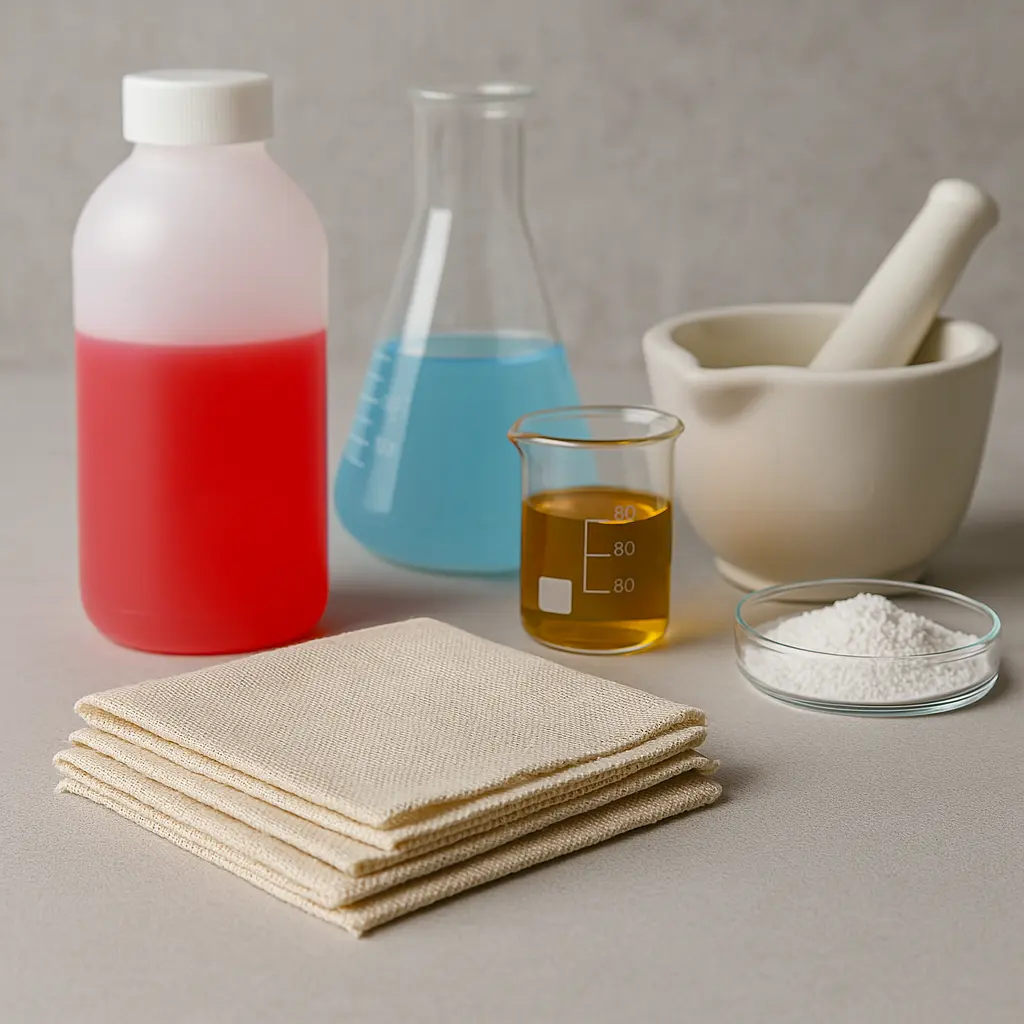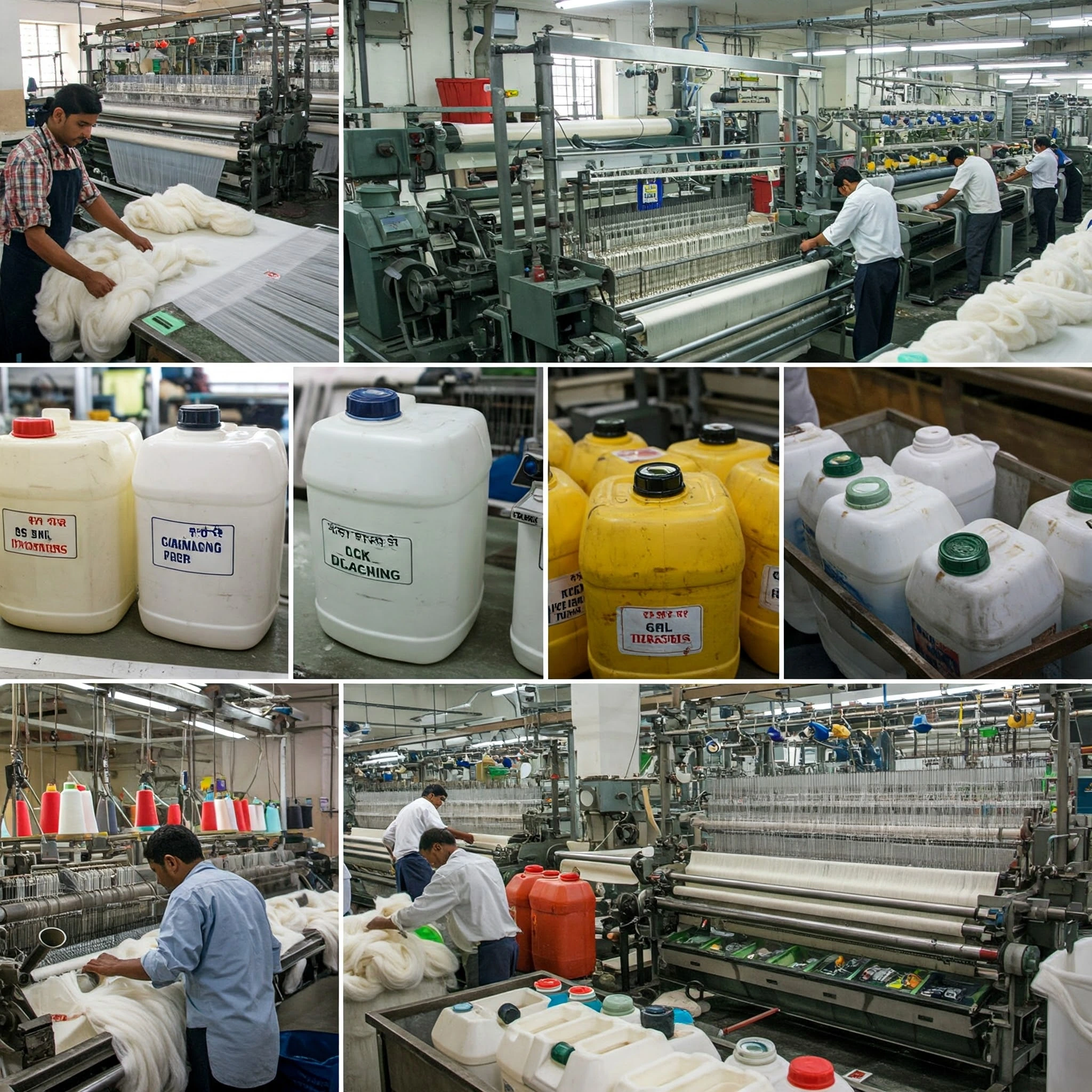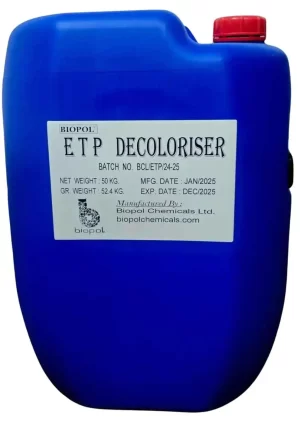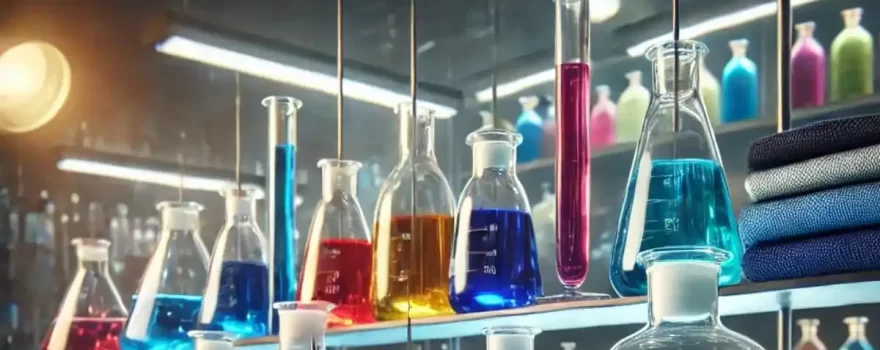
“Concentrated textile chemicals” might sound like a mouthful, but it’s a crucial aspect of modern textile manufacturing. These aren’t just any chemicals; they’re highly concentrated formulations designed to deliver maximum performance with minimal environmental impact. Think of them as the powerhouses of the textile industry, driving efficiency and innovation across the entire production chain.
Table of Contents
Different Types of Concentrated Textile Chemicals Used in Manufacturing
The world of concentrated textile chemicals is vast and diverse. You’ll encounter a wide array of these powerful compounds, each playing a unique role in transforming raw materials into finished fabrics.
- Dyes: These are the heart and soul of textile coloration, adding vibrant hues and intricate patterns to fabrics. Concentrated dye formulations offer exceptional colorfastness and brilliance, while minimizing environmental impact.
- Surfactants: These chemicals act as wetting agents, emulsifiers, and dispersants, facilitating the even distribution of dyes and other chemicals within the fabric. They also serve to elevate the overall productivity of the dyeing process.
- Finishing Agents: These chemicals impart desirable properties to fabrics, such as softness, wrinkle resistance, water repellency, and flame retardancy. Concentrated finishing agents allow for precise application and contribute to enhanced fabric performance.
- Auxiliaries: This broad category encompasses a wide range of chemicals, including leveling agents, pH adjusters, and antifoaming agents. These auxiliaries optimize the dyeing and finishing processes, ensuring consistent and high-quality results.
How Concentrated Textile Chemicals Improve Fabric Quality
Concentrated textile chemicals are essential in converting standard fabrics into advanced, high-performance materials. Let’s delve into how they enhance fabric quality across various stages of production:
- Dyeing:
- Bright Shades: Concentrated dye formulations yield rich, enduring colors that are resistant to fading, even after repeated laundering.
- Evenness: These chemicals ensure that dye is absorbed uniformly, resulting in a consistent color throughout the fabric.
- Reduced Dyeing Time: High concentrations often lead to faster dyeing cycles, boosting productivity.
- Finishing:
- Enhanced Performance: Finishing agents, like softeners and wrinkle-resistant treatments, are precisely applied using concentrated formulations. This translates to superior fabric performance and improved consumer satisfaction.
- Durability: Concentrated finishes provide long-lasting protection against wear and tear, extending the lifespan of garments.
- Printing:
- Sharp Prints: Concentrated printing inks produce crisp, defined prints with vibrant colors and excellent colorfastness.
- Reduced Ink Consumption: High-quality inks in concentrated form minimize wastage, leading to cost savings.
By carefully selecting and applying concentrated textile chemicals, manufacturers can achieve exceptional fabric quality, meeting the ever-evolving demands of the fashion industry.
Advantages of Using Concentrated Textile Chemicals in Textile Processing
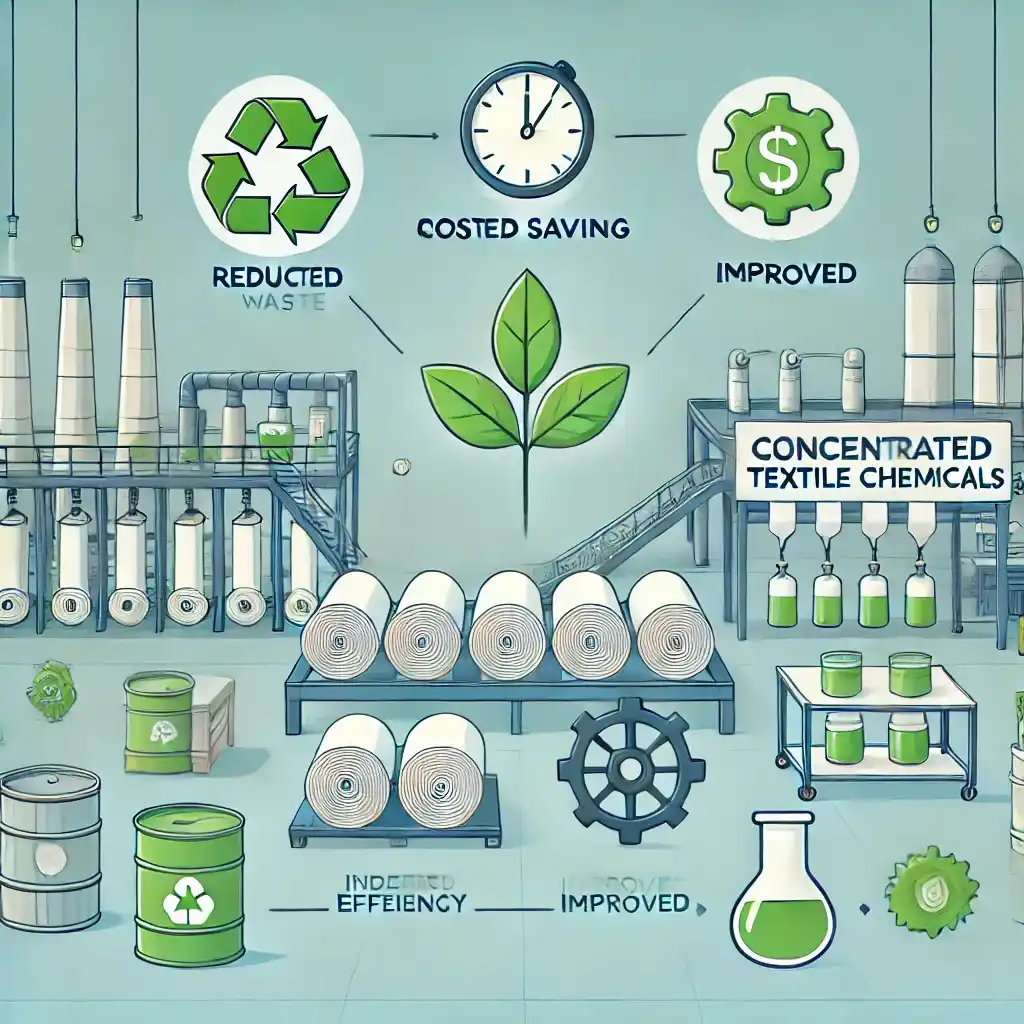
Adopting concentrated textile chemicals presents a variety of benefits for both producers and ecological sustainability.
- Cost Savings:
- Reduced Transportation Costs: Concentrated chemicals require less packaging and transportation, significantly lowering logistical expenses.
- Lower Storage Space Requirements: Smaller volumes mean less storage space is needed, freeing up valuable factory floor space.
- Reduced Chemical Handling Costs: Handling and storage of concentrated chemicals are often more efficient, minimizing labor costs and potential spills.
- Environmental Friendliness:
- Reduced Water Consumption: Concentrated chemicals often require less water for dilution, minimizing water usage and wastewater treatment costs.
- Minimized Chemical Waste: Lower usage translates to less chemical waste generated, reducing the environmental burden.
- Improved Sustainability: Many concentrated chemicals are formulated with a focus on sustainability, incorporating eco-friendly ingredients and minimizing their environmental impact.
- Enhanced Efficiency:
- Improved Process Control: Concentrated chemicals offer greater precision in application, leading to better process control and more consistent results.
- Increased Productivity: Faster processing times and reduced downtime contribute to increased productivity and faster time-to-market.
- Improved Performance:
- Enhanced Fabric Quality: As discussed earlier, concentrated chemicals often deliver superior fabric quality, leading to improved customer satisfaction and brand value.
In essence, adopting concentrated textile chemicals is a win-win situation, offering both economic and environmental advantages while enhancing the overall quality of the finished product.
Emerging Trends in Concentrated Textile Chemicals: Innovation and Sustainability
The textile industry is constantly evolving, and concentrated chemicals are at the forefront of this evolution. This offers a perspective on the captivating trends that are molding the future.
- Sustainability is Paramount: The demand for eco-friendly and sustainable textile production is skyrocketing. This has driven the development of:
- Bio-based Chemicals: Derived from renewable sources like plants and microorganisms, these chemicals offer a greener alternative to traditional petrochemical-based options.
- Enzyme-based Technologies: Enzymes are increasingly used in various stages of textile processing, offering high performance with minimal environmental impact.
- Waterless Dyeing Techniques: Innovative technologies are emerging that minimize or eliminate water usage in the dyeing process, significantly reducing environmental footprint.
- Digitalization and Precision:
- Smart Chemicals: Advanced sensors and data analytics are being integrated into chemical formulations to provide real-time feedback and optimize performance.
- Predictive Modeling: Sophisticated software tools are enabling manufacturers to predict and optimize chemical usage, minimizing waste and maximizing efficiency.
- Customization and Personalization:
- Tailored Solutions: Concentrated chemicals are being formulated to meet the specific needs of individual brands and customers, enabling greater customization and personalization.
These trends are not just about innovation; they’re about creating a more sustainable and responsible textile industry while delivering cutting-edge performance and unparalleled quality.
Environmental Impact and Safety Considerations of Using Concentrated Textile Chemicals
Although concentrated chemicals present various benefits, it is essential to consider the associated environmental and safety issues.
- Environmental Impact:
- Wastewater Treatment: Negligent handling and disposal of chemicals can result in the pollution of water supplies. Effective wastewater treatment systems are essential to minimize the environmental impact.
- Air Pollution: Some chemicals may release volatile organic compounds (VOCs) into the atmosphere during processing.
- Safety Considerations:
- Chemical Handling: Concentrated chemicals can be hazardous. The implementation of proper safety protocols, including the utilization of personal protective equipment (PPE) and safe handling techniques, is essential for the protection of workers.
- Storage and Transportation: Furthermore, ensuring safe storage and transportation practices is critical to prevent any occurrences of spills and leaks.
- Regulatory Compliance:
- Adhering to Regulations: Textile manufacturers must comply with all relevant environmental and safety regulations, including those related to chemical usage, disposal, and worker safety.
By prioritizing safety and environmental responsibility, textile manufacturers can leverage the benefits of concentrated chemicals while minimizing their potential impact.
How to Effectively Use Concentrated Textile Chemicals for Optimal Results
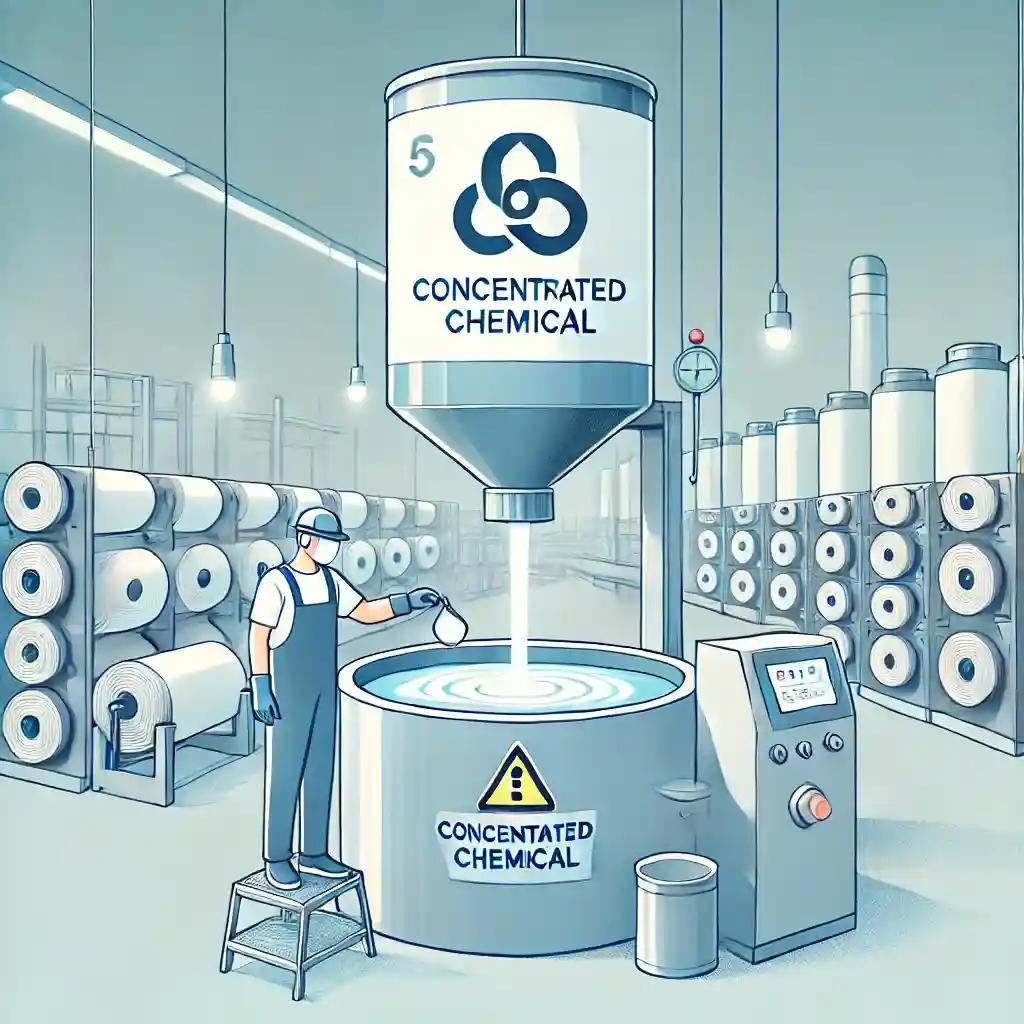
Maximizing the benefits of concentrated textile chemicals requires a methodical approach. Here’s how to ensure optimal results:
- Accurate Measurement and Dilution: Carefully measure and dilute chemicals in accordance with the manufacturer’s guidelines. Inaccurate dilution can lead to subpar results, such as uneven dyeing or ineffective finishing.
- Thorough Mixing and Blending: Ensure thorough mixing and blending of chemicals to achieve uniform solutions. This is vital for ensuring stable and foreseeable results.
- Proper Equipment and Maintenance: Utilize appropriate equipment, such as calibrated dosing systems and well-maintained dyeing machines, for accurate and efficient chemical application.
- Process Control: Supervise and regulate essential process parameters, including temperature, pH levels, and liquor ratio, to enhance chemical efficacy and maintain uniform quality.
- Operator Training: Allocate resources to extensive training initiatives for operators to improve their knowledge of chemical management, application methods, and problem-solving techniques.
By following these best practices, textile manufacturers can harness the full potential of concentrated chemicals, achieving superior fabric quality, improved efficiency, and reduced environmental impact.
Leading Suppliers of Concentrated Textile Chemicals: What Sets Them Apart?
The market for textile chemicals is an ever-evolving arena, populated by various stakeholders competing for a share of the market. Presented here are several key suppliers and the distinctive features that differentiate them.
- Archroma: Known for their innovative dye formulations, Archroma specializes in [mention specific area of expertise, e.g., reactive dyes, digital printing inks]. They are well-known for their significant focus on sustainability and their comprehensive research and development efforts.
- Clariant: A global leader in textile auxiliaries, Clariant offers a comprehensive range of products, from surfactants to finishing agents. They are particularly recognized for [mention key strength, e.g., cutting-edge technology, excellent customer service].
- Huntsman Corporation: A long-established player in the market, Huntsman Corporation boasts a strong reputation for [mention key strength, e.g., high-quality products, reliable supply chains]. They are a preferred choice for [mention specific market segment, e.g., denim manufacturers, home textile producers].
Comparison of Key Suppliers
| Supplier Name | Key Strengths | Specializations |
| Archroma | Sustainability, R&D | Reactive Dyes, Digital Printing Inks. |
| Clariant | Technology, Customer Service | Surfactants, Finishing Agents. |
| Huntsman Corporation | Quality, Reliability | Denim, Home Textiles. |
This is not an exhaustive list, and the textile chemicals market is constantly evolving. It’s crucial for manufacturers to carefully evaluate their specific needs and select suppliers that best align with their goals and priorities.
Real-World Case Studies: Successful Implementation of Concentrated Textile Chemicals in Textile Manufacturing
We shall investigate a number of real-life cases where concentrated textile chemicals have played a crucial role:
- Case Study 1: Sustainable Denim Production: A leading denim manufacturer implemented a new dyeing process using concentrated, low-impact dyes and auxiliaries. This resulted in:
- Reduced water consumption by 20%
- Decreased energy usage
- Improved colorfastness and reduced environmental impact
- Enhanced brand image due to the focus on sustainability
- Case Study 2: High-Performance Sportswear: A sportswear manufacturer adopted concentrated finishing agents to create high-performance fabrics with enhanced moisture-wicking, breathability, and durability. This led to:
- Improved athlete performance
- Increased customer satisfaction
- Enhanced brand reputation for innovation and quality
- Case Study 3: Eco-Friendly Home Textiles: A home textile manufacturer switched to concentrated, bio-based dyes for their organic cotton bedding line. This resulted in:
- Reduced environmental impact
- Improved consumer appeal due to the eco-friendly credentials
- Increased market share in the growing market for sustainable home goods
These case studies highlight the significant benefits associated with the effective use of concentrated textile chemicals. By prioritizing innovation and sustainability, manufacturers can secure a competitive advantage and play a vital role in advancing a more responsible and sustainable textile industry.
The Future of Concentrated Textile Chemicals in a Growing Industry
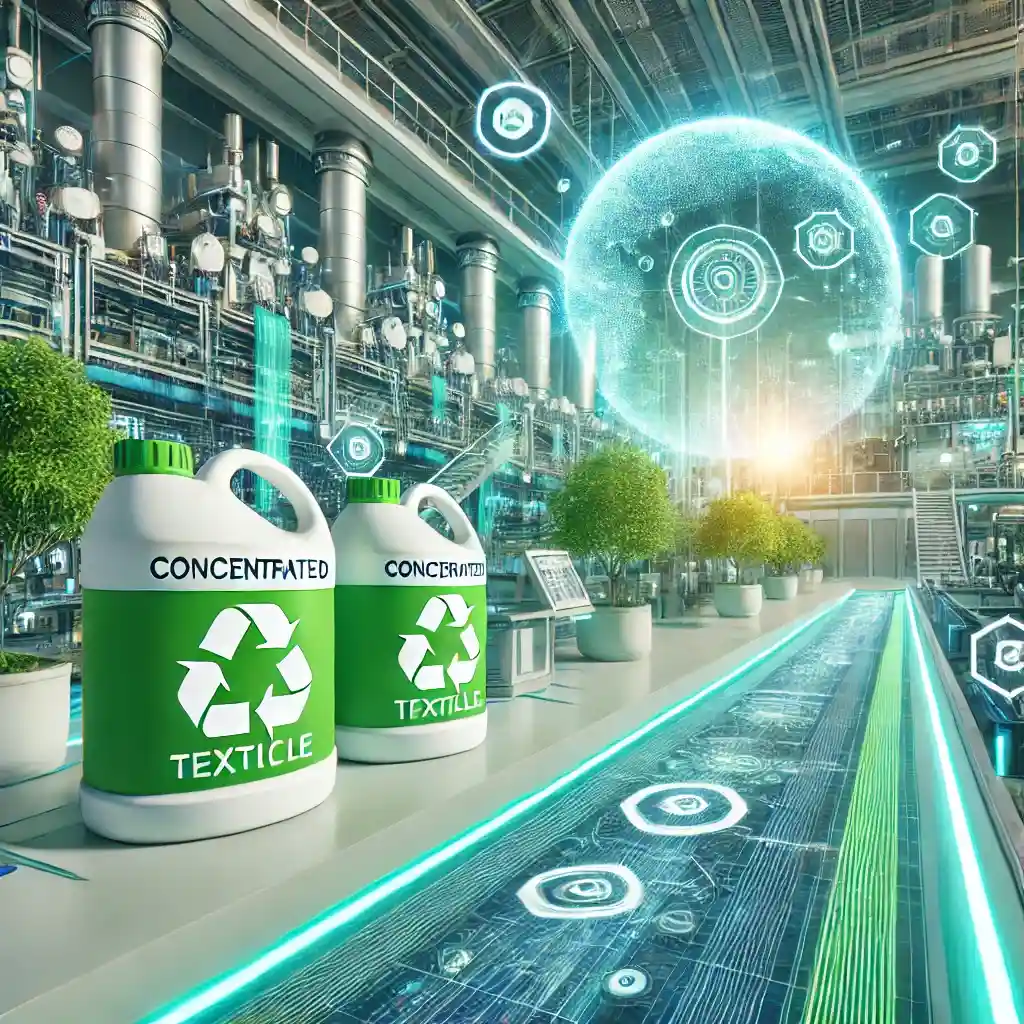
The future of concentrated textile chemicals is bright, driven by several key factors:
- Growing Demand for Sustainable Solutions: An increasing appetite for sustainable and eco-friendly products is likely to sustain the momentum for the development of innovative, bio-based, and low-impact chemicals.
- Technological Advancements: Ongoing technological progress is anticipated in fields such as nanotechnology, biotechnology, and artificial intelligence, which will contribute to the creation of increasingly efficient and effective chemical formulations.
- Digitalization and Precision Manufacturing: The integration of digital technologies, such as predictive modeling and real-time data analysis, will further enhance the precision and efficiency of chemical usage.
- Customization and Personalization: The growing inclination towards customized and personalized products will require the creation of more specialized and tailored chemical solutions.
By adopting these trends and committing to research and development, the textile industry can secure a sustainable and thriving future for concentrated textile chemicals.
Summary and Key Takeaways on Concentrated Textile Chemicals
Concentrated textile chemicals represent highly efficient formulations that are essential in contemporary textile production:
- Cost Savings: They provide various benefits, such as cost savings through decreased expenses related to transportation, storage, and handling.
- Environmental Benefits: Lower water consumption, minimized chemical waste, and reduced environmental impact.
- Enhanced Efficiency: Faster processing times, improved process control, and increased productivity.
- Improved Fabric Quality: Enhanced colorfastness, improved performance, and superior fabric quality.
Concentrated textile chemicals can be classified into key types, including dyes, surfactants, finishing agents, and auxiliaries. Major suppliers like Archroma, Clariant, and Huntsman Corporation deliver a diverse selection of innovative and sustainable solutions.
Successful implementation of concentrated chemicals requires accurate measurement and dilution, thorough mixing, proper equipment, process control, and operator training.
The future of concentrated textile chemicals is promising, driven by a growing demand for sustainable solutions, technological advancements, and the increasing importance of customization and personalization.
By embracing innovation and prioritizing sustainability, the textile industry can leverage the power of concentrated chemicals to create high-quality, eco-friendly, and innovative products that meet the evolving demands of the market.
Read more: Specialty Textile Chemicals: The Secret Sauce of the Textile Industry
